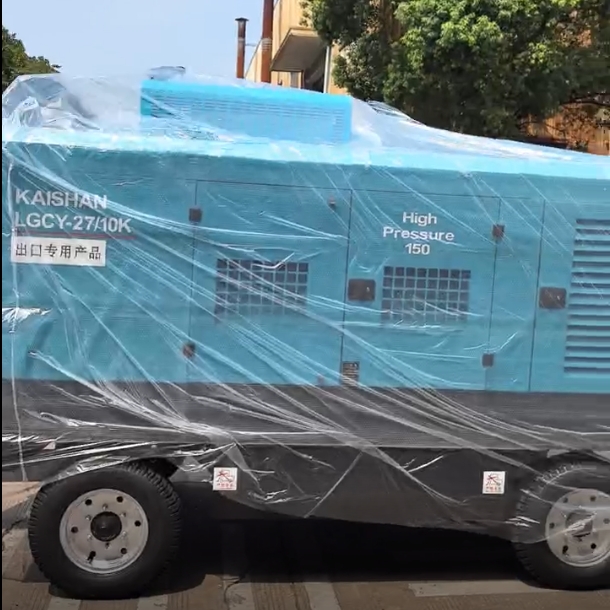In industrial manufacturing, sandblasting technology is widely used for metal surface treatment, cleaning and oxide removal. Efficient sandblasting operations cannot be separated from the support of compressors. Choosing the right compressor is one of the key factors to ensure the smooth progress of sandblasting operations. For enterprises, understanding the required compressor specifications can improve work efficiency and reduce long-term operation and maintenance costs.
Basic requirements for compressors
In sandblasting operations, the main task of the compressor is to provide high-pressure airflow to ensure the continuous operation of the sandblasting machine. Generally speaking, the amount of air required for sandblasting operations is large, so the capacity and working pressure of the compressor need to meet specific requirements.
Capacity requirements: The air consumption of sandblasting machines is usually measured in “cubic meters per minute” (CFM). Different types of sandblasting machines have different air consumption. Small sandblasting machines generally require about 6-10 CFM of air flow, while large industrial sandblasting machines may require 40 CFM or even more. When choosing the right compressor capacity, it is necessary to decide based on the type of sandblasting machine and the frequency of operation.
Working pressure: In sandblasting, the pressure of the airflow is crucial, usually between 60-120 PSI (pounds per square inch). Some demanding applications may require higher working pressures. Therefore, the compressor needs to have sufficient output pressure to ensure the stability and quality of the sandblasting effect.
Compressor type: Common sandblasting compressors are piston compressors and screw compressors. Piston compressors are suitable for low-frequency sandblasting operations and are more economical. Screw compressors are suitable for long-term, continuous operation, providing a more stable airflow, and are the first choice for large-scale industrial sandblasting operations.
Precautions when selecting a compressor
Environmental factors: When selecting a compressor, factors such as the temperature and humidity of the working environment should also be considered. Extreme environments may cause compressor failure or reduced efficiency, so adaptable compressors can better cope with harsh working conditions.
Maintenance and care: Sandblasting operations require high maintenance of equipment, especially compressors. Regularly checking and replacing the compressor’s lubricating oil, filters and other components can effectively extend the service life of the equipment and reduce the failure rate.
Energy efficiency: With the increasing requirements for environmental protection and energy saving, choosing a high-efficiency, low-energy compressor has become the first choice for many companies. Efficient compressors can not only reduce energy consumption, but also reduce long-term operating costs.
Sandblasting operations have high requirements for compressors. From air flow to pressure, to the choice of equipment type, they all need to be carefully considered according to specific needs. By choosing the right compressor, companies can not only improve sandblasting efficiency, but also reduce operation and maintenance costs, bringing higher benefits to production.
Post time: Jan-23-2025




